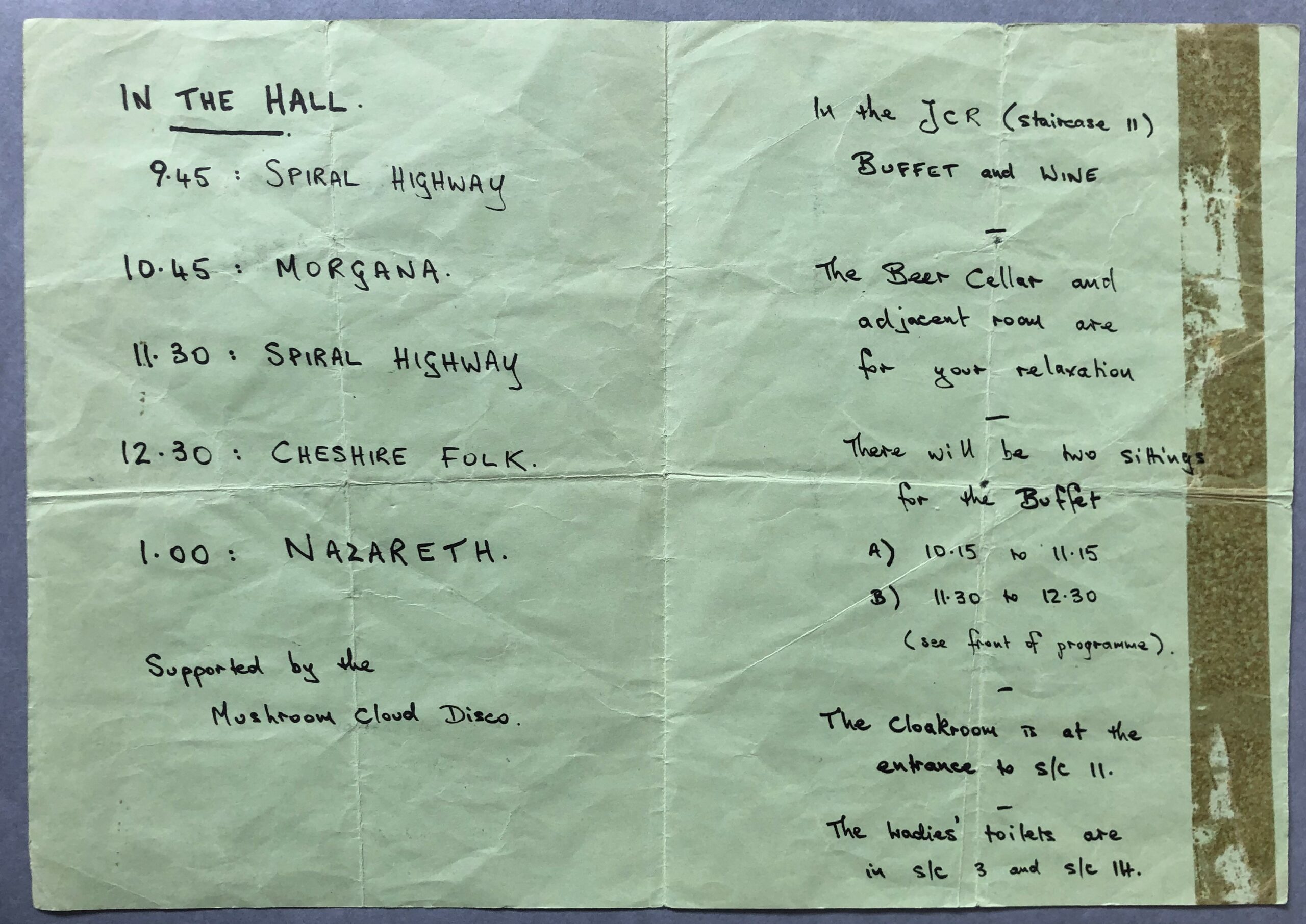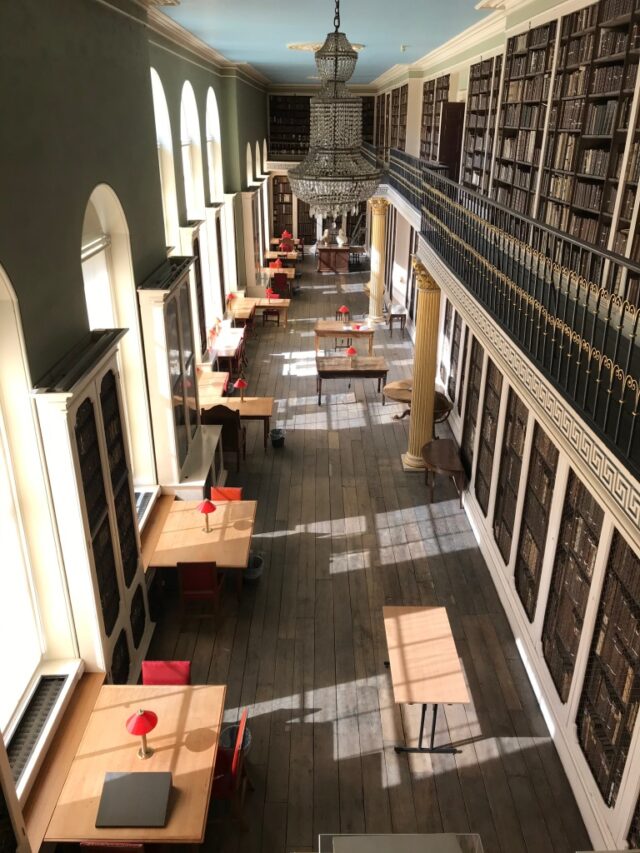Women at Worcester College: the First Admission of Women in 1979

30th October 2019
Women at Worcester College: the First Admission of Women in 1979
Our October 2018 blog post looked at the ceremony during which an undergraduate officially enters the University, matriculation. Its focus was a diary from 1911, which described a ceremony that would be recognisable to students today, but there was one major difference, as it described a College that was entirely male. Women were not able to study at Worcester until 1979, making this year the 40th anniversary of the admission of women to the College, an event more than momentous enough to warrant a celebratory blogpost.
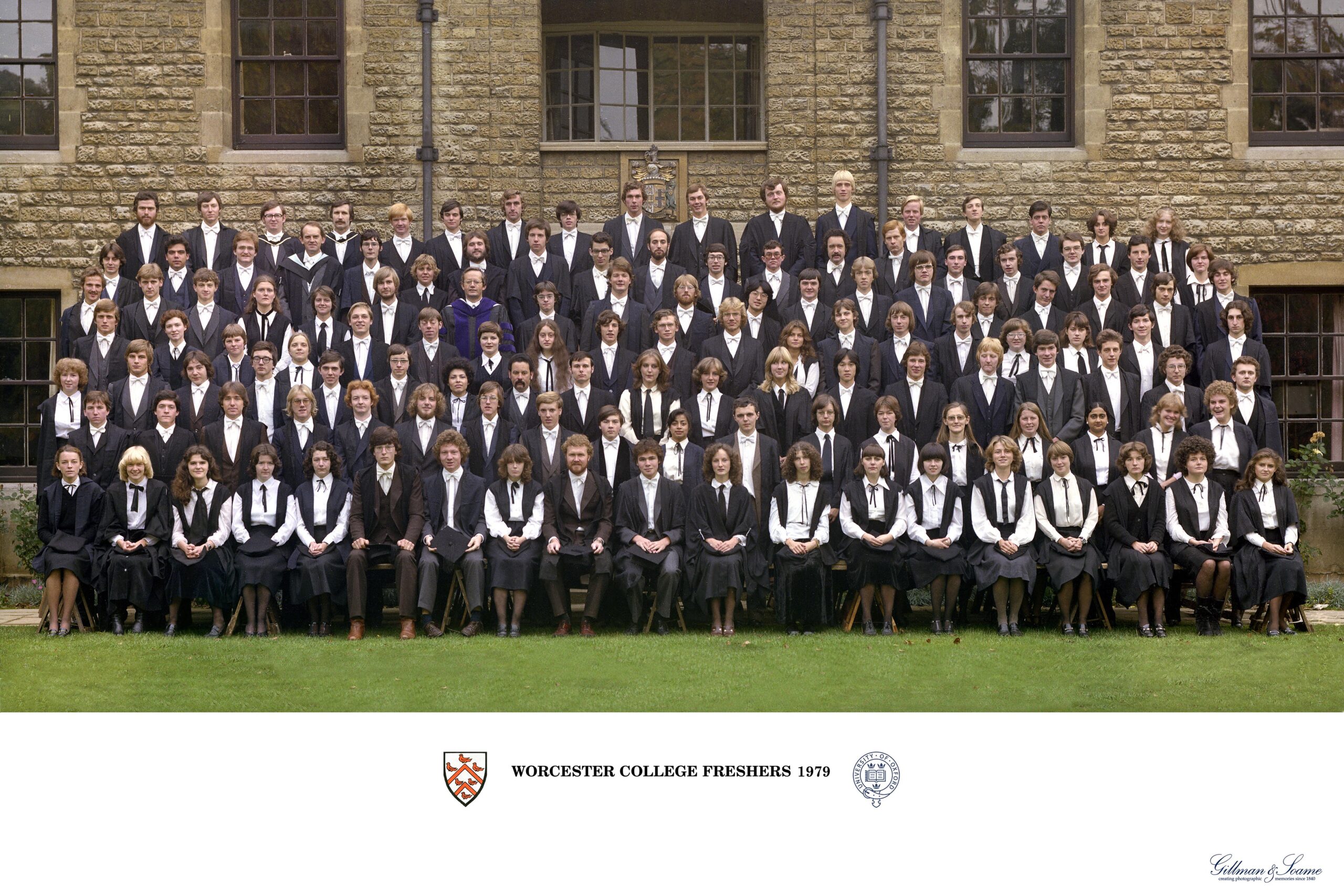
1979 Matriculation Photograph
On 11 October 1979, 41 women crossed Worcester’s threshold as undergraduates and graduates, the first time that women had been admitted as students of the College. Worcester’s doors were fully opened after 265 years, but only after considerable debate among the College community.
In 1963, the Robbins Report called for more university places for women nationally and there were discussions across Oxford as to how that might be achieved, generally focusing on the creation of a new women’s college. Worcester’s Governing Body rejected a proposal to discuss admitting women to the College in February 1963, and remained opposed to a mixed college throughout the 1960s. Opposition to men’s colleges going mixed was also strong among the women’s colleges, who feared their applications would drop.
In 1971, the Queen’s College organised a meeting of colleges to discuss the admission of women to the men’s colleges, which the Worcester College Chaplain attended. Opinion had undergone something of a reversal since 1963, and the Worcester Governing Body were now, in principle, supportive of a mixed college (a straw poll found 15 to 5 in favour). The JCR conducted a referendum on the issue in June 1971, with 75% of voters in favour of admitting women to the College.
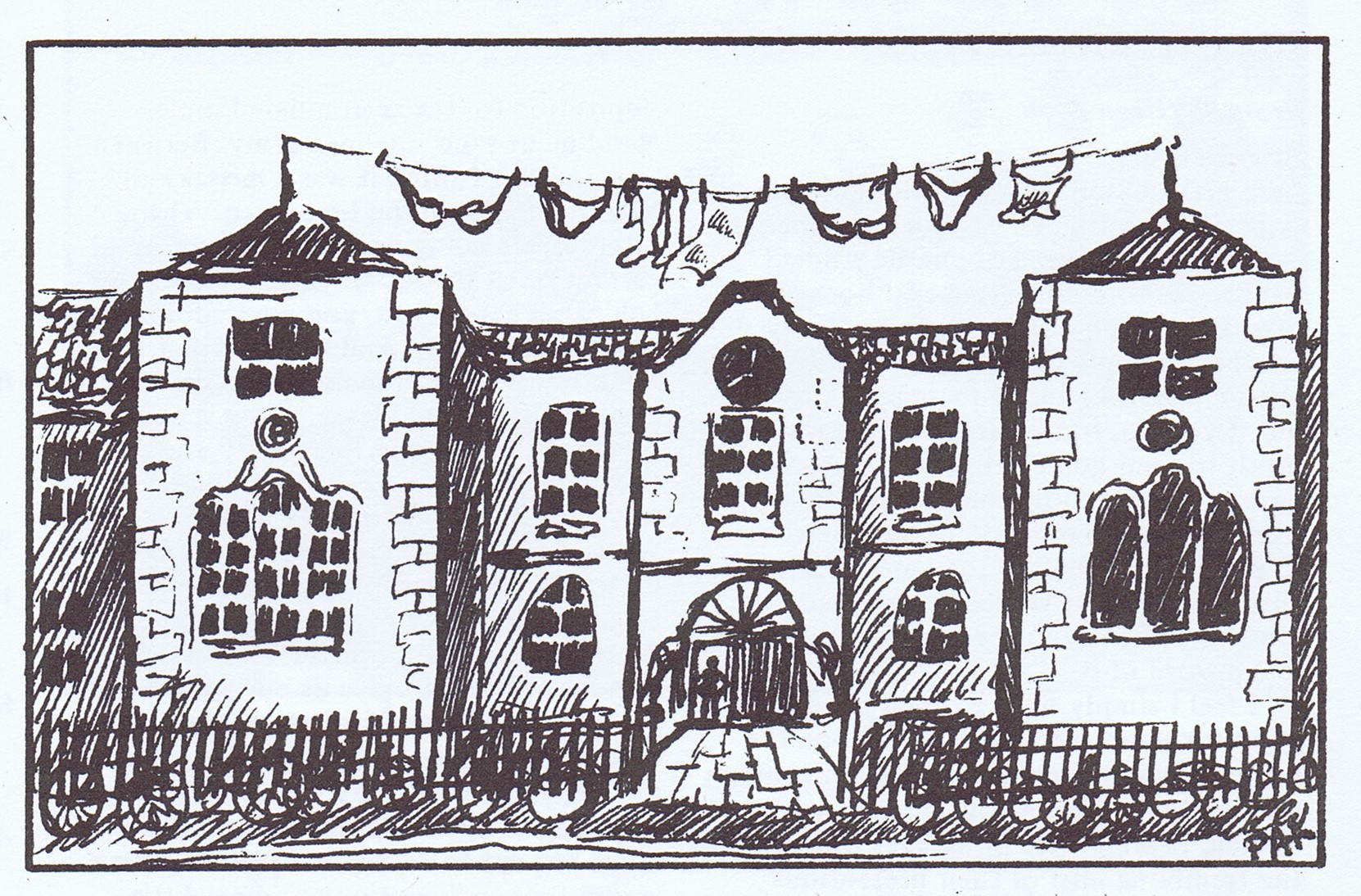
Cartoon from satirical JCR magazine Wuggins; the magazine published two articles in favour of the admission of women to the College.
Cautious in the face of change, and mindful that a small but vocal proportion of the Governing Body were against the admission of women, the College chose not to participate in the initial experimental group of five colleges that went mixed in 1974. The University imposed a restriction that no other college could change their statutes on this matter for five years, but by 1977 there was an increasing feeling among the College’s Governing Body that the experiment had been successful, that the Sex Discrimination Act of 1975 had made the defence of single-sex colleges more difficult, and that Worcester was in danger of being left behind by the more proactive men’s colleges pushing for the admission of women.
At a Special College Meeting on 9 March 1977, the Worcester College Governing Body voted 22 to 8 in favour of the deletion of clause I.3: “No woman shall be a member of the College”. The vote to admit women as undergraduates and graduates was held in June 1977, when the result was 20 in favour to 3 against, with 3 abstentions, and the College formally signalled its intention to the University that it would admit women from October 1979.
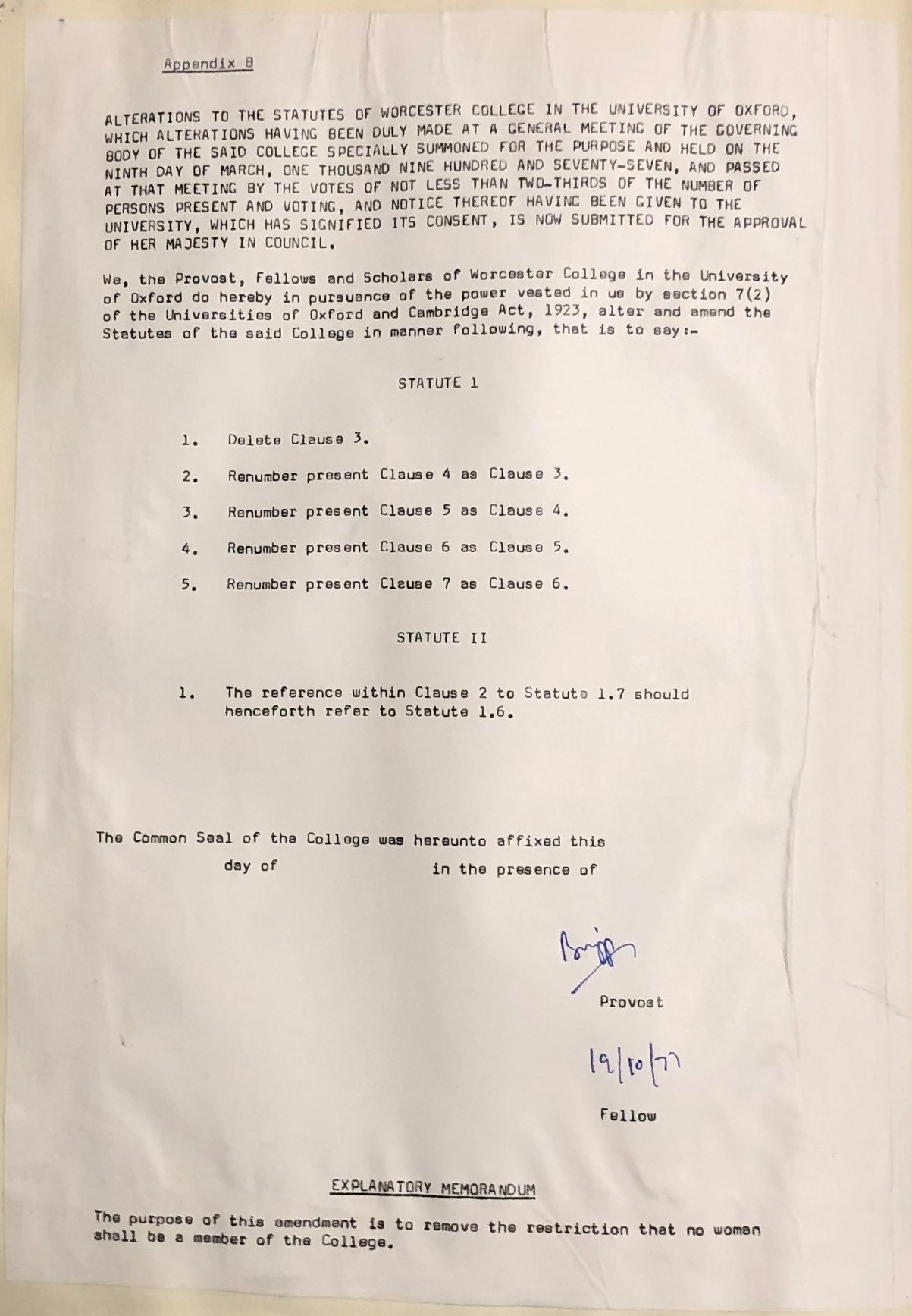
Governing Body minutes, Appendix B, containing the request for a change to the College statutes removing the restriction that no woman shall be a member of the College, 1977.
By 1982 the editor of the Worcester College Record could report to old members that women “are now so much an element of our society that many of us find it hard to recollect what it was like before they came”, but whether the women felt less conspicuous is debateable. It was not until 2011 that the number of women undergraduates equalled that of the men, and parity on the Governing Body is still far from achieved.
However, women had played many roles at Worcester College before 1979, and it is important not to erase the employees, benefactors, family members and even “[women] of ill-fame” who shaped Worcester history in the centuries before co-education.
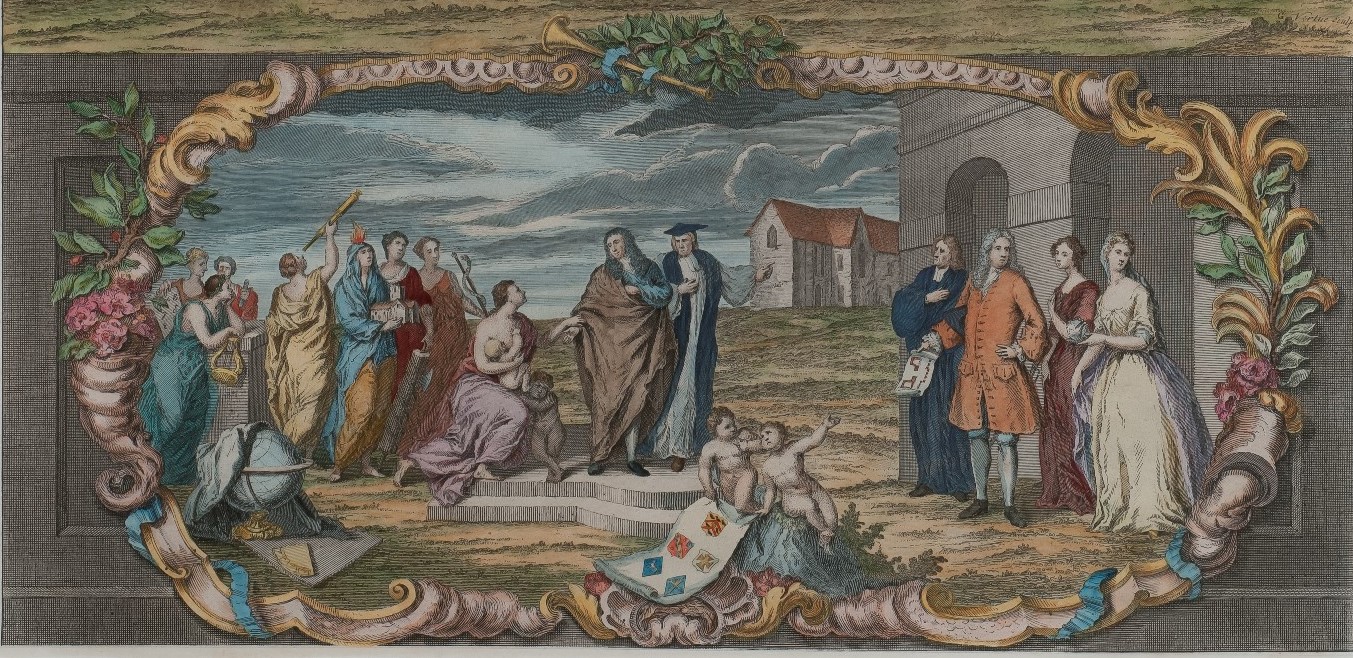
Depictions of important eighteenth century benefactors Margaret Alchorne and Sarah Eaton on the far left of this image, from the Oxford University Almanack for 1741.
Female benefactors have been literally shaping the College since the early-eighteenth century, as funds from Margaret Alchorne (d. 1717) and Sarah Eaton (d. 1736) were used in the construction of the Library/Hall/Chapel block, staircases 5 and 6, and the Provost’s Lodgings. Women were also present in the daily life of the College, from the kitchen woman “scouring the plates” in the eighteenth century, through to the scouts and housekeepers who provided support to undergraduates and fellows.

The first female employees of the College, the kitchen women, were almost certainly illiterate, and signed for their salary with a mark. This wave-shaped mark, made by Eleanor Cradock in 1717, is the first entry in the College Archives made by a woman.
Undergraduates from the women’s colleges were increasingly a part of Worcester life after the Second World War. In addition to social and academic interactions they took female roles in College plays and the Worcester-Somerville Musical Society gave concerts throughout the year and also held “tea meetings and gramophone recitals”.

Programme for the Worcester-Somerville Christmas Dance 1971
Women were present in administrative and academic-related roles too from the mid-twentieth century. One such trailblazer was Lesley Le Claire, who was promoted to the position of College Librarian in 1977, a role which included membership of the SCR. The last exclusively male space in the College was breached, and two years later Worcester opened its doors to women students for the first time.
Emma Goodrum, Archivist
*The 1979 matriculation photograph has been reproduced by kind permission of Gillman & Soame photographers and can be ordered online at https://www.gsimagebank.co.uk/worc/t/yree2p2019









